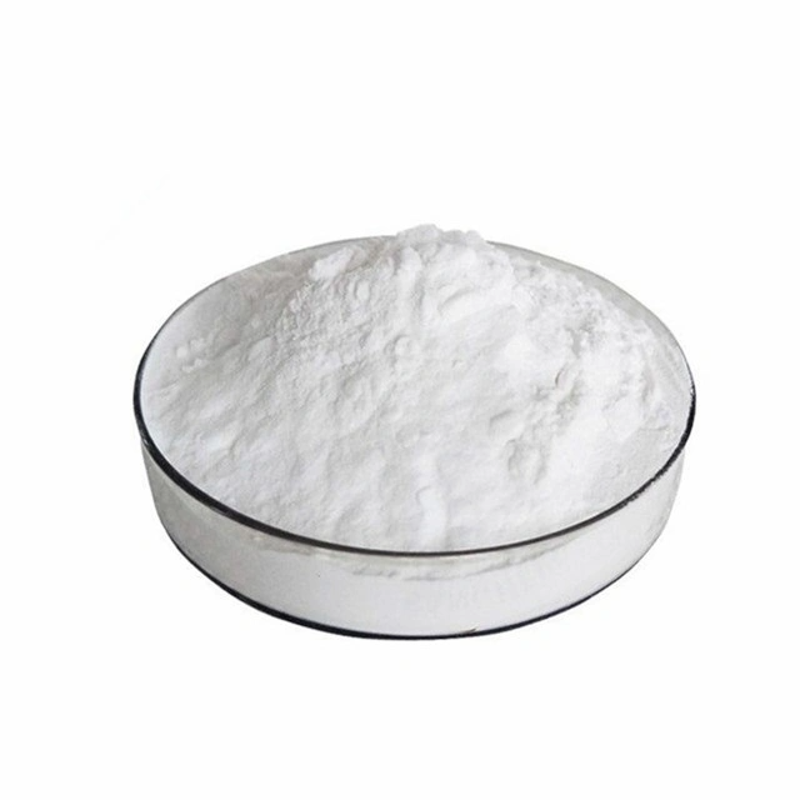Mr. Brain's Ki67 estimate improves the accuracy of glioma biopsies
-
Last Update: 2020-06-27
-
Source: Internet
-
Author: User
Search more information of high quality chemicals, good prices and reliable suppliers, visit
www.echemi.com
Ki67 is a cellular nuclear antigen that is expressed on cells in the G1, S, G2 or M phase seismostic cyclesThe level of Ki67 expression in normal brain tissue is very lowIn glioma therapy, Ki67 levels are associated with higher tumor levels and poor prognosis, and can therefore be used as a proliferatorTumor classification determines follow-up treatment, and its accuracy depends on accurate biopsy sampling, but in clinical practice, sampling is often not allowed and tumor level is misjudgedTargeting the high proliferation area of tumor can increase the probability of sampling in the highly malignant part of tumor, and thus improve the prognosis of treatmentEvan DHGates of the Anderson Cancer Center at the University of Texas, USA, combined advanced MRI imaging data with the pathological diagnosis of stereotactic biopsy tissue, to determine the high expression of Ki67 in the tumor for targeted sampling, can make up for the lack of sampling- Excerpted from the article: Gates EDH, et alNeuro Oncol2019 Jan 17doi: 10.1093/neuonc/noz004Ki67 is a cellular nuclear antigen that is expressed on cells in the G1, S, G2 or M phase of the cell cycleThe level of Ki67 expression in normal brain tissue is very lowIn glioma therapy, Ki67 levels are associated with higher tumor levels and poor prognosis, and can therefore be used as a proliferatorTumor classification determines follow-up treatment, and its accuracy depends on accurate biopsy sampling, but in clinical practice, sampling is often not allowed and tumor level is misjudgedTargeting the high proliferation area of tumor can increase the probability of sampling in the highly malignant part of tumor, and thus improve the prognosis of treatmentEvan DHGates of the Anderson Cancer Center at the University of Texas, USA, combined advanced MRI imaging data with the pathological diagnosis of stereotactic biopsy tissue, to determine the high expression of Ki67 in the tumor for targeted sampling, can make up for the lack of samplingThe results were published online in January 2019 in Neuro-Oncologyresearchers used Nashold needles or surgical pliers to collect samplesBiopsy under the guidance of neural navigation and record the spatial coordinates of the target when collecting specimensPreoperative using the results of conventional MRI imaging to locate the biopsy site as a "regular" target, and then combined with "advanced" imaging data from dispersion, perfusion, and dynamic enhancement sequences, the biopsy target, the so-called "advanced" target, was determined in the tumor area where the cerebral blood capacity (CBV) was relatively high, the Ktrans high or the epigenetic dispersion coefficient (ADC) was lowA maximum of 5 targets per patient are specifiedNeurosurgeons and radiologists select biopsy targets according to clinical standard procedures, without knowing "advanced" imaging data, and incorporate "routine" targets into tumor surfaces in tumor MRI-T1 enhancement or T2-weighted high-signal areasThen, "advanced" imaging data is obtained and "advanced" targets are placed in tumor areas with high cerebral blood volume, high Ktrans, or low ADCThe distance between the "regular" and "advanced" targets is 3mm, and the positioning is considered to be the sameNeuropathists tested each pathological specimen without understanding imaging data and reported the Ki67 index (percentage of positive nuclei)a total of 23 patients with glioma were biopsions from January 2013 to May 2016, with an average of 2-4 per case, a total of 52 biopsies and 52 virtual biopsies34 cases of pathological specimens were taken with the nashold needle and 18 cases were used with tweezersLow, medium, and high-level gliomas are more evenly distributed in patients The researchers performed 13 biopsies on 7 cases of Grade II glioma, 21 biopsies for 9 cases of Grade III glioma, and 18 biopsies for 7 cases of Grade IV glioma The average Ki67 value of the pathological specimen was 7.39%, positively correlated with tumor level the researchers found that the model of T2-weighted, graded anisotropy, CBF and Ktrans penetration imaging was the most ideal for predicting Ki67, with R2, 0.747, based on the conventional imaging of MRI, epigenetic dispersion imaging, and perfusion imaging Only models with regular fixed variables, such as T2, T1, T1 enhancement, and FLAIR, are used to predict the performance of the Ki67 at R2-0.496 Therefore, it is advantageous to select MRI routine check data plus "advanced" imaging data to provide the target the highest estimate of Ki67 is always in MRI-enhanced tumors, which is consistent with clinical understanding of the proliferation-leakage mechanism Moreover, the biopsy targets provided by the Ki67 high valuation area are often different from the usual methods of biopsy at the closest to the surface of the brain For low-grade gliomas, Ki67's estimate is low and there is no local maximum researchers believe that Ki67 can predict the accuracy of clinical biopsies through clinical imaging data Advanced MRI dispersion, perfusion and permeability imaging technology improves predictive accuracy.
This article is an English version of an article which is originally in the Chinese language on echemi.com and is provided for information purposes only.
This website makes no representation or warranty of any kind, either expressed or implied, as to the accuracy, completeness ownership or reliability of
the article or any translations thereof. If you have any concerns or complaints relating to the article, please send an email, providing a detailed
description of the concern or complaint, to
service@echemi.com. A staff member will contact you within 5 working days. Once verified, infringing content
will be removed immediately.







